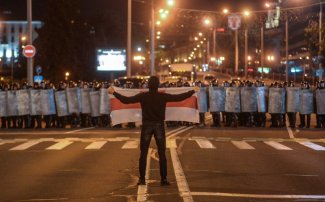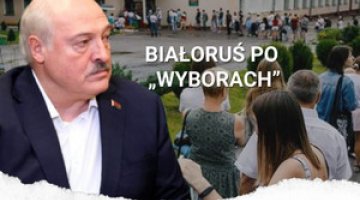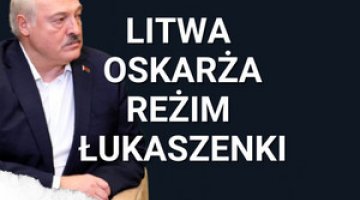Mass protests in Belarus

On 9 August, the presidential elections in Belarus ended. According to the Central Election Commission (CEC), the turnout was 84.2%. The CEC also announced partial voting results based on the situation at 9am local time. In accordance with these results, Alyaksandr Lukashenka won with 80.2 percent, with his main rival Sviatlana Tsikhanouskaya in second place, with 9.9% support. Lukashenka’s election result corresponds to the figures from government polls published in recent weeks, but it massively inflates the actual level of support for the president, and underestimates the support for his main opponent.
In response to the rigged elections, public protests have broken out in Minsk and more than 20 other cities. The most massive, numbering tens of thousands, took place in the capital, and large numbers of security forces were used to violently disperse demonstrations, using water cannons, bang-flash grenades and rubber bullets against the protesters. Regular army units and internal troops were also observed on the streets. More than 100 people were detained, there are reports of many people injured, and it is likely that one person has been killed. In the capital, from the outset the demonstrators were split into several smaller groups because the law enforcement services enforced a blockade on the city’s main squares and thoroughfares. Public transport has been restricted and most independent internet websites have been blocked, as has access to the internet in individual locations. The number of protesters in towns outside the capital (including Brest, Mogilev, Baranavichy, Slonim, Kobryn, Gomel, Lida and Pinsk) is probably no more than a few thousand in each place.
Tsikhanouskaya issued a statement questioning the CEC’s election results, citing the available protocols from around 20 electoral committees (mainly in Minsk) which published data indicating an overwhelming victory for her. President Lukashenka has not yet commented on these findings or the results.
Commentary
- The scale of the protests is large, including in the provinces, although they are very dispersed, spontaneous and lack any political leadership. Most of the protesters retreated in response to the brutal pacification, and as a result (in the late hours of the night) all demonstrations have been dispersed, and the crowds of demonstrators have been broken up into smaller groups. However, the protests are expected to resume on 10 August, in response to the officially stated results of the elections and the brutal actions of the law enforcement forces. Given the regime’s apparent determination to restore full control over society, the law enforcement forces can be expected to respond even more harshly if opposition intensifies. The pacification of the demonstrations is intended to quash the mood of protest in society. In this way, the authorities are counting on a repeat of the scenario from June and July this year, when spontaneous demonstrations against the repression employed on the other candidates were effectively suppressed, thanks precisely to the immediate and brutal actions taken by the law enforcement forces.
- Protests have also taken place in the regions, including small- and medium-sized towns, as evidenced by the nationwide nature (beyond the pro-opposition capital) of the opposition to the authorities and the public’s determination to change the regime. Yesterday’s protests did not produce any clear leaders. Tsikhanouskaya did not participate in them either, as she was probably aware of the risks, and her lack of experience in street protests.
- Both the official results of the elections and the turnout do not deviate from the results of previous elections held in 2015 and 2010, which indicate an attempt to continue the ritual nature of Lukashenka’s electoral victories. This time, however, the scale of counterfeiting is incomparably greater, as evidenced by the minutes from more than a dozen electoral committees where voter fraud did not take place, among other reports. These all point to a victory for Tsikhanouskaya.
- Aware of the loss of public support, the authorities decided to increase their control over the electoral process to an unprecedented degree, as evidenced by the limitations on the work of independent observers and the move to prevent OSCE missions from arriving in the country. The pretext for this was the global pandemic, although previously the government had made a great show of downplaying it. For the first time, the Belarusian Foreign Ministry also radically reduced the number of accreditations issued to foreign journalists. Moreover, according to those independent observers who were admitted to polling stations, the record high turnout in early voting (given at over 41%) was exaggerated by at least a factor of two. In turn, the great public interest in voting on 9 August encountered obstructions from the electoral committees in many places, which led to huge queues and in some cases extensions of the committee’s work, something unprecedented in Belarus. The temporary blockade of most independent news websites was also unprecedented (even compared to the dramatic elections of 2010). As a result, access to information was severely restricted, and moved mainly to social networks.
- The public discontent has revealed the advanced erosion of Lukashenka’s authority, and the brutal pacification of the protests has deepened his delegitimisation among the Belarusian public. The regime’s future now depends on the scale of the subsequent protests (which have already been announced), and on how the nomenklatura and security apparatus hold together. However the developments progress, there will be a crisis in relations with the West, and the potential for Russian influence on the situation in Belarus will increase.




